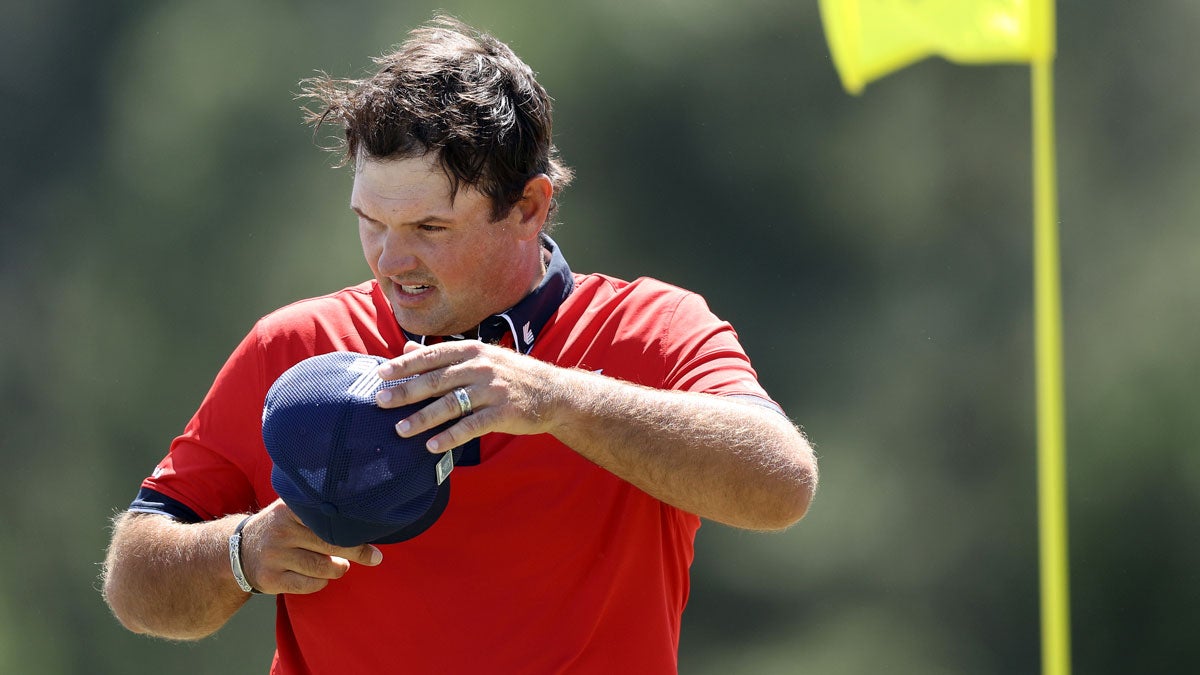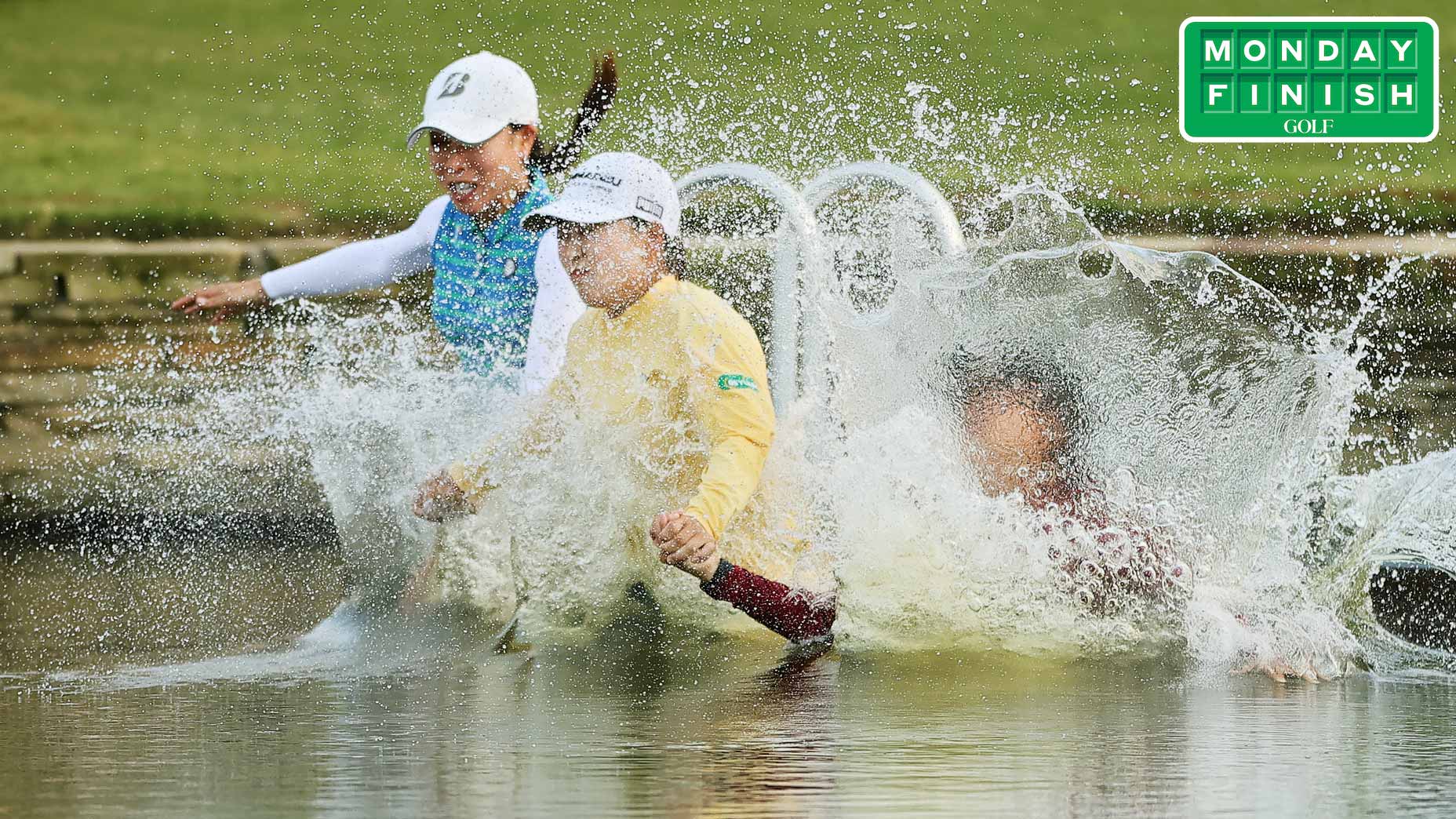Patrick Reed skewers Augusta National hole, wants it to ‘disappear’
- Share on Facebook
- Share on Twitter
- Share by Email

Patrick Reed at the Masters on Friday.
getty images
AUGUSTA, Ga. — Like many players in what in the early going at least was a wet, windy and wild Masters, Patrick Reed was unable to complete his opening round Thursday. When darkness forced him and his playing partners, Sungjae Im and Kurt Kitayama, off they course, they were two-thirds of the way down the par-5 15th. When play resumed at 7:50 a.m. Friday, Reed, who at that point was two under on his round and squarely in the hunt, had 80 yards left from the left rough, from where he missed the green just long. He took two putts from there and made par. At the par-3 16th, Reed flared his tee shot wide right, more than 50 feet from his mark — “poor swing,” he said later — and three-putted from the fringe. Bogey.
Then came the par-4 17th, where a 283-yard drive up the right side of the fairway left Reed 171 to a back-right pin and directly into the blinding sun. Reed’s approach was on line, flying directly over the stick, but long. It bounded once on the back green and down into the collection area behind it, leaving him one of the hardest chips on the course, even for the owner of some of the softest hands in golf. Reed’s bump-and-run attempt back up the slope stopped just short of the putting surface, and two putts later, he had made a 5.
The home hole was even messier. Reed’s blocked drive burrowed into the trunk of a tree, forcing him to take an unplayable and leading to a double-bogey 6. Reed had played the closing three holes of his opening round in four over.
“A shock to the system,” he later said of his morning’s rough start. “Gut punch, for sure.”
But in his second round, Reed would punch back. In some of the wickedest conditions a Masters field has ever faced, Reed made three birdies and just two bogeys to post a two-under 70, which tied for the second-lowest round of the day (Ludvig Aberg managed a 69) and was more than five strokes better than the field average. At day’s end, Reed had climbed back to even par for the tournament and six off the lead. The 2018 green-jacket winner was back in the mix.
Following his second round, Reed offered a detailed deconstruction of the 21-and-change holes he had played. He said he was pleased with how he managed his game in the gusts, throttling back on some tee shots to ensure he found the fairway and committing to club selections. “It’s very easy to get guidey when it gets windy like this, especially around a golf course like this,” Reed said. “When that happens, Augusta National just absolutely will destroy you.”
Like the rest of the field, Reed had his ups and downs Friday, but one hole in particular stuck in his craw: how the 17th had treated him on his first go-around.
“Bad break there,” he said. “Felt like I played 17 exactly how I wanted to.”
But Reed didn’t leave it there.
“One night, 17 on this golf course is going to disappear, and I’m going to be the one that does it,” he said. “I hit a perfect drive this morning, hit the iron shot exactly how I wanted to and I was closer to 18 tee box than I was 17 green.
“Those things are what drive me nuts is hitting quality golf shots and walking off with bogey.”
Reed isn’t the first player to tweak the 17th hole — heck, even the course’s designer, Alister MacKenzie, thought the penultimate hole would be an acquired taste, because of the low-running approach shot for which its sloping green calls. “Until players have learned to play the desired shot,” MacKenzie wrote, “this will undoubtedly be one of the most fiercely criticized holes.” In 1999, when the hole was lengthened by 25 yards and also narrowed, not all players loved the changes, contending that the green was too severe to hold with a mid-iron. “Seventeen is ridiculous,” three-time champion Gary Player said that year. “Bobby Jones would turn in his grave.”
Thus far this week, the 17th is playing as the ninth-toughest hole with a 4.204 scoring average (as of midday Saturday). It has yielded one eagle, 12 birdies and 50 bogeys or worse.
Reed began his third round at 1:35 p.m.. playing alongside Adam Schenk. He bogeyed the first hole, birdied the second and as of this writing was still six off the lead.
Latest In News

Alan Bastable
Golf.com Editor
As GOLF.com’s executive editor, Bastable is responsible for the editorial direction and voice of one of the game’s most respected and highly trafficked news and service sites. He wears many hats — editing, writing, ideating, developing, daydreaming of one day breaking 80 — and feels privileged to work with such an insanely talented and hardworking group of writers, editors and producers. Before grabbing the reins at GOLF.com, he was the features editor at GOLF Magazine. A graduate of the University of Richmond and the Columbia School of Journalism, he lives in New Jersey with his wife and foursome of kids.









